[orc]What is the meaning of ‘Balance of Payments’? What is the status of India’s exports & imports? Here is an explainer.
Trade between different cultures and societies has been a common feature across human civilization. In the modern-day context, international trade plays a key role in the economy of every country. Exporting goods & services that a country has surplus of or is good at and importing those which it needs is a driver behind the international trade.
Ascertaining the value of exports & imports along with the difference between them, can offer insights into the state of a country’s economy. Balance of Payments is a good measure which indicates the surplus or deficit in a country’s trade with other nations.
In this story, we explore the trends in India’s Balance of Payments (BOP) and its various components.
Positive Capital Account covering up for the negative Current Account over the years
Balance of Payments (BoP) is a statement that has a record of all the monetary transactions made between residents of a country with the rest of the world during a specific time period.
BoP statement indicates whether a country has a surplus or deficit.
BoP statement consists of two components – Current Account and Capital Account. Current account consists of all the inflow and outflow of goods and services of a country. Capital account includes all the capital transactions made between the countries.
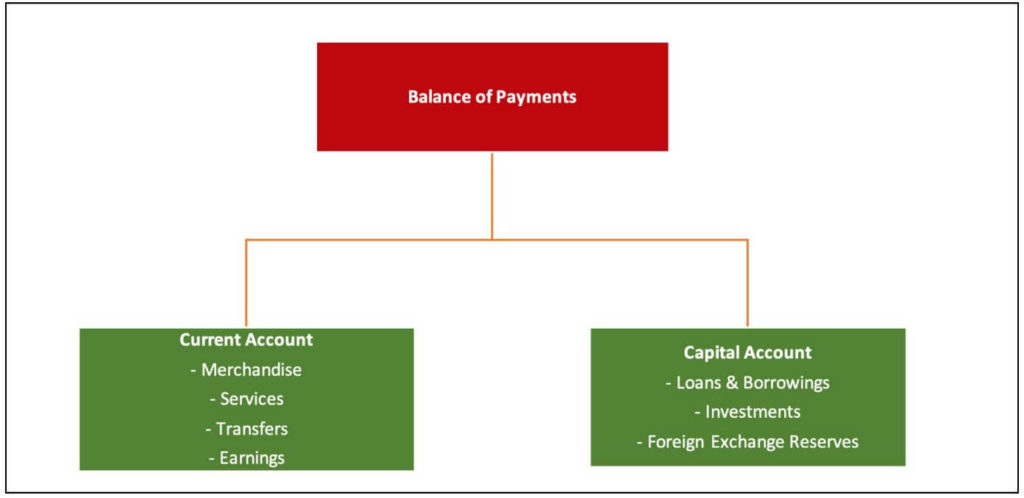
BoP follows the double entry system of accounting i.e. every debit has a corresponding credit. Ideally, when all the components are rightly accounted for, the net sum would be ‘zero’. India has a deficit current account with the value of the imports exceeding the value of exports for most of the years. This negative current account is covered up by the positive capital account (funded by foreign Investments, loans etc.).
However, as per the data provided by RBI, for 2018-19, the positive capital account could not cover up for the current account deficit and hence the overall deficit in BoP was to the tune of ₹ 202 billion. This amount is balanced out through foreign exchange reserves. Over the last decade (barring one year), the capital account was able to balance out the negative current account.
The current account deficit for 2018-19 was ₹ 4,002 billion which is a substantial increase over 2017-18, when it was ₹ 3,141 billion. However, there is a fall in the value of capital account in 2018-19 (₹ 3,834 billion) compared to that of 2017-18 (₹ 5,891 billion) resulting in capital account not being able to cover up current account’s deficit leading to negative BoP.
The last time there was a deficit in BoP was in 2011-12, when it was ₹ 685 billion. During that year, the current account deficit grew substantially, while the corresponding growth in capital account was not to that extent.
In the subsequent year, even though the current account deficit increased, the corresponding capital account net value increased, there by covering the deficit.
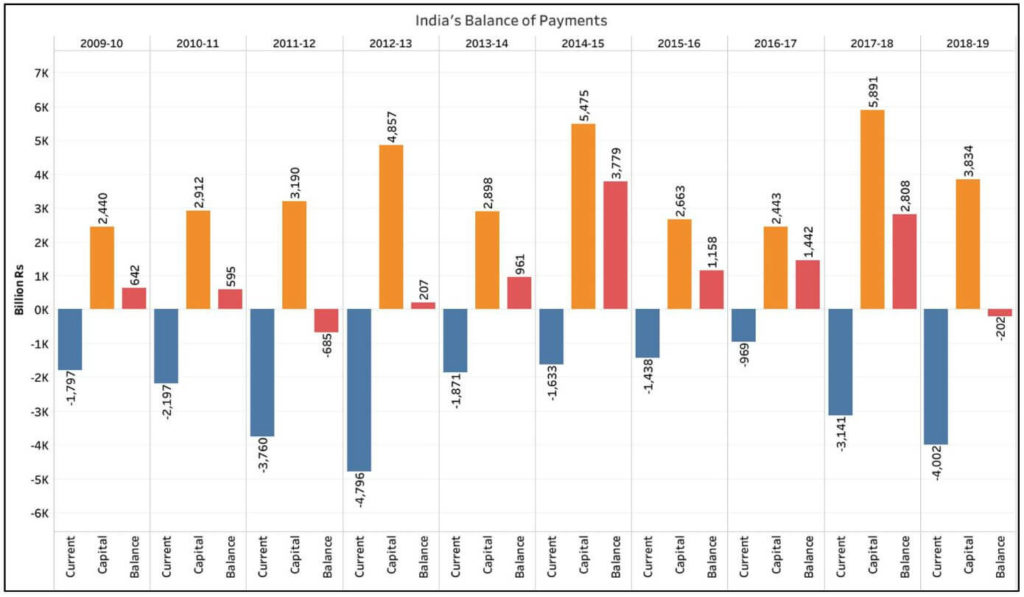
Deficit in trading & income contributing towards Current account deficit
The current account takes into consideration the trade of both the tangible commodities/goods and the services along with transfers and earnings.
While the net value of the current account has been varying over the last decade, it has always been in the negative. This implies that the value of imports exceeded that of the exports.
A closer look at current account numbers reveal that the net transfers have remained positive over the years, while net income and net trade values were always in the negative and thereby contributing to current account deficit.
At the beginning of the decade i.e. 2009-10, the net value of transfer was ₹ 2483 billion which has gradually increased over the decade and for the year 2018-19 it is ₹ 4892 billion.
However, the trend is opposite for Net Income and Net Trade whose deficit has been on a gradual increase.
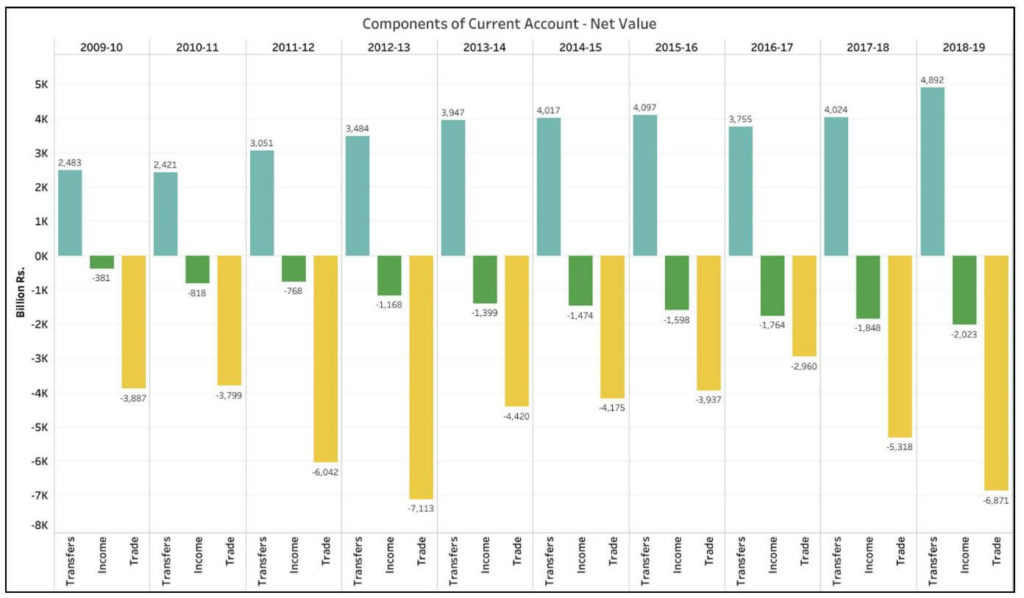
The head ‘Income’ consists of two categories – Investment income & Compensation of employees. While ‘Compensation of Employees’ shows a surplus every year with the Inwards being more than Outwards, the same isn’t the case for Investment Income. The net value of Investment Income has a deficit every year over the past decade.
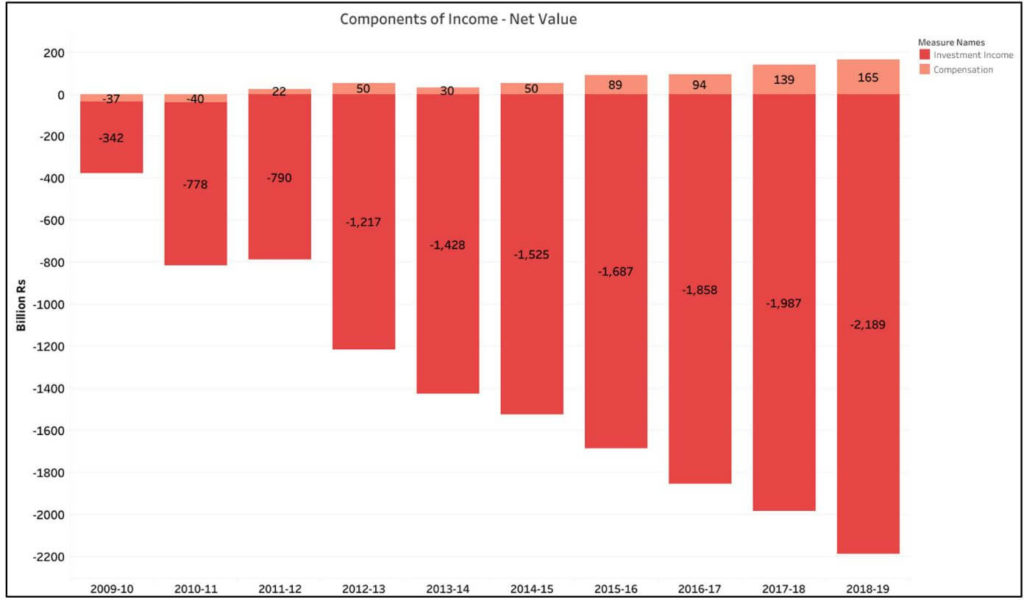
Deficit in Trade is due to imports exceeding the exports
While the net deficit under ‘Income’ is a contributor towards current income deficit, its proportion is less. The major part of the current income deficit is due to the huge trade deficit of India.
Trade includes both tangible goods as well as services. A closer inspection shows that India’s trade in services has a surplus but the deficit in the trade of tangible goods is so huge that it results in a net negative for trade.
Over the last decade, the surplus from trade of services has increased by 3.35 times. In 2009-10, the surplus through services was ₹ 1,712 billion which increased to ₹ 5,738 billion in 2018-19.
The different components of the services include – Travel, Transportation, Software services, financial services etc.
During the same time period, the trade deficit when it comes to goods has more than doubled. In 2009-10, the deficit for trading goods was ₹ 5,599 billion which has increased to ₹ 12,609 billion in 2018-19.
The earlier highest deficit of trade in goods was in 2012-13, when it was ₹ 10,645 billion. Over the subsequent years the volume of this deficit has come down to reach ₹ 7,545 billion in 2016-17. But the last two years has seen an increase in the deficit of trade in goods with ₹ 10,317 billion and ₹ 12,609 billion in 2017-18 and 2018-19 respectively.
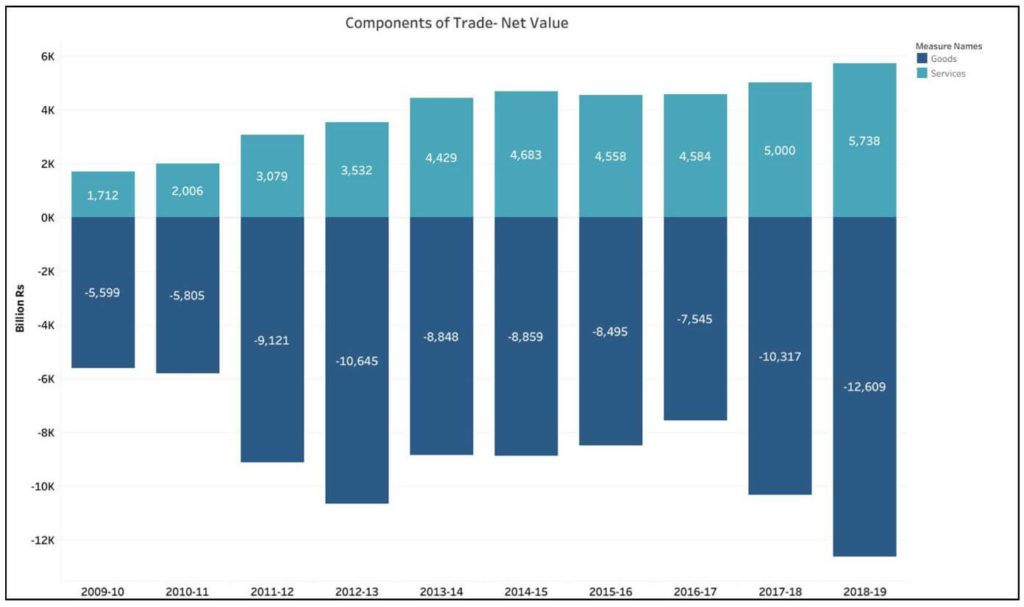
Increase in imports of goods has overshadowed the increase in exports
Over the past decade, India’s exports of goods have increased by 3 times. However, during the same period, the value of India’s imports has increased by nearly 4.2 times. This higher corresponding increase in the value of imports over the exports is contributing towards the increasing trade deficit.
During 2013-14, there was a major spike in the volume of imports of goods where in it increased to ₹ 28,159 billion from ₹ 16,677 billion the previous year. After a slight increase in the next year, the value of goods imported has come down to in 2015-16 and 2016-17. During these two years also, the exports has shown a corresponding increase.
However, in 2017-18 and 2018-19, the value of imports increased by ₹ 3,898 billion and ₹ 5,959 billion respectively. Correspondingly, the exports only increased by ₹ 1,125 billion and ₹ 3,668 billion respectively. Hence, in spite of a higher increase in the exports during 2018-19, the increase in imports has widened the deficit gap.
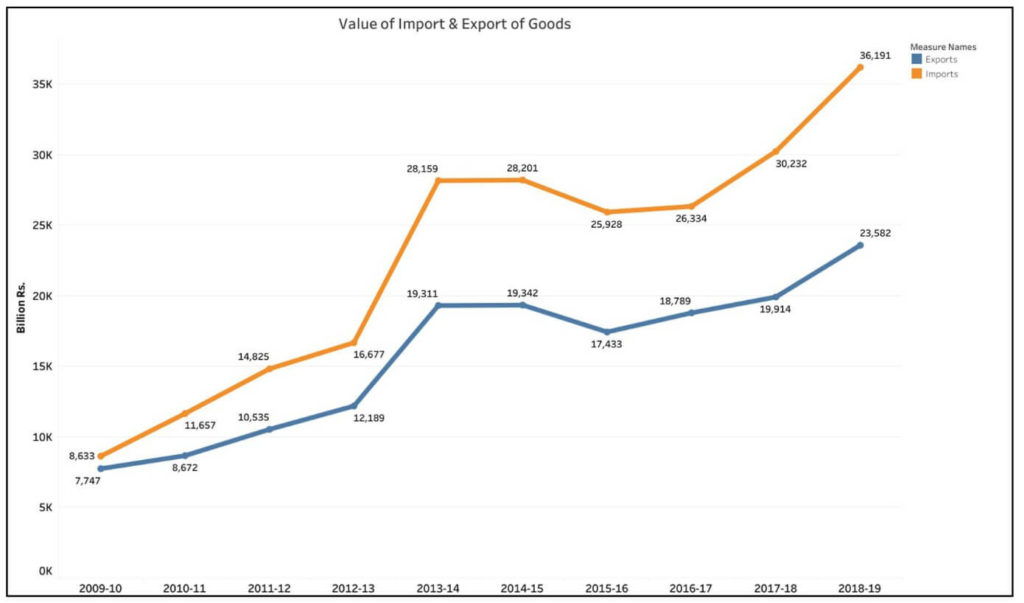
Increase in the value of exports can help to reduce the trade deficit
With the increase in the value of exports, it does appear that decreasing the imports could help cover up the trade deficit. A quick look at the different commodities being imported would reveal that Petroleum products, machinery, organic & inorganic chemicals form a major part of the imports. These commodities have a significant impact on the economy as they are vital to the commercial activity of the country.
While alternate solutions can be sought out, a decrease in the imports in the short term might not be a plausible solution. On the other hand, increasing exports, more specifically the value of the services (where India has a surplus) can help to cut down on the deficit.
In the next story, we would explore the different components of the exports and imports in India and the related trends, along with understanding the reasons for negative BoP in 2018-19.
Featured Image: Balance of Payments



2 Comments
Pingback: Explainer: Understanding India’s Balance of Payments & Trade - Fact Checking Tools | Factbase.us
Pingback: Software Services & Petroleum dominate India’s Export & Import respectively - Fact Checking Tools | Factbase.us